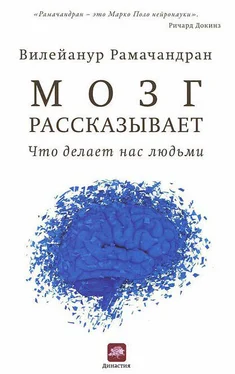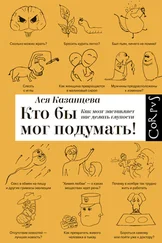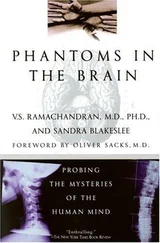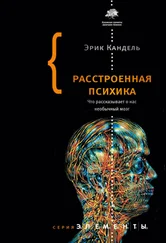Bauer, R. M. (1986). The cognitive psychophysiology of prosopagnosia. In H. D. Ellis, M. A. Jeeves, F. Newcombe, & A. W. Young (Eds.), Aspects of face processing (pp. 253–278). Dordrecht, Netherlands: Martinus Nijhoff.
Berlucchi, G., & Aglioti, S. (1997). The body in the brain: Neural bases of corporeal awareness. Trends in Neurosciences, 20(12), 560–564.
Bernier, R., Dawson, G., Webb, S., & Murias, M. (2007). EEG mu rhythm and imitation impairments in individuals with autism spectrum disorder. Brain and Cognition, 64(3), 228–237.
Berrios, G. E., & Luque, R. (1995). Cotards syndrome. ЛсГй Psychiatrica Scandinavica, 91(3), 185–188.
*Bickerton, D. (1994). Language and human behavior. Seattle: University of Washington Press.
Bisiach, E., & Geminiani, G. (1991). Anosognosia related to hemiplegia and hemianopia. In G. P. Prigatano and D. L. Schacter (Eds.), Awareness of deficit after brain injury: Clinical and theoretical issues. Oxford: Oxford University Press.
Blake, R., Palmeri, T. J., Marois, R., & Kim, C. Y. (2005). On the perceptual reality of synesthetic color. In L. Robertson and N. Sagiv (Eds.), Synesthesia: Perspectives from cognitive neuroscience (pp. 47–73). New York: Oxford University Press. ‘Blackmore, S. (1999). The тёте machine. Oxford: Oxford University Press. Blakemore, S. — J., Bristow, D., Bird, G., Frith, C., & Ward, J. (2005). Somatosensory activations during the observation of touch and a case of vision-touch synaesthesia. Brain, 128,1571–1583.
‘Blakemore, S. — J., & Frith, U. (2005). The learning brain. Oxford, UK: Blackwell Publishing.
Botvinick, М., & Cohen, J. (1998). Rubber hands «feel» touch that eyes see. Nature, 391(6669),756.
Brang, D., Edwards, L., Ramachandran, V. S., & Coulson, S. (2008). Is the sky 2? Contextual priming in grapheme-color synaesthesia. Psychological Science, 19(5), 421–428.
Brang, D., McGeoch, P., & Ramachandran, V. S. (2008). Apotemnophilia: A neurological disorder. Neuroreport, 19(13), 1305–1306.
Brang, D., & Ramachandran, V. S. (2007a). Psychopharmacology of synesthesia: The role of serotonin S2a receptor activation. Medical Hypotheses, 70(4), 903–904.
Brang, D., & Ramachandran, V. S. (2007b). Tactile textures evoke specific emotions: A new form of synesthesia. Poster session presented at the 48th annual meeting of the Psychonomic Society, Long Beach, CA.
Brang, D., & Ramachandran, V. S. (2008). Tactile emotion synesthesia. Neurocase, 15(4), 390–399. Brang, D., & Ramachandran, V. S. (2010). Visual field heterogeneity, laterality, and eidetic imagery in synesthesia. Neurocase, 16(2), 169–174.
Buccino, G., Vogt, S., Ritzl, A., Fink, G. R., Zilles, K., Freund, H. J., et al. (2004). Neural circuits underlying imitation of hand actions: An event related fMRI study. Neuron, 42,323–334.
Bufalari, I., Aprile, Т., Avenanti, A., Di Russo, F., & Aglioti, S. M. (2007). Empathy for pain and touch in the human somatosensory cortex. Cerebral Cortex, 17, 25532561.
Bujarski, K., & Sperling, M. R. (2008). Post-ictal hyperfamiliarity syndrome in focal epilepsy. Epilepsy and Behavior, 13(3), 567–569.
Caccio, A., De Blasis, E., Necozione, S., & Santilla, V. (2009). Mirror feedback therapy for complex regional pain syndrome. The New EnglandJournal of Medicine, 361 (6), 634–636.
Campbell, A. (1837, October). Opinionism [Remarks on «New School Divinity,» in The Cross and Baptist Journal]. The Millennial Harbinger [New Series], 1, 439. Retrieved August 2010 from http://books.google.com.
Capgras, J., & Reboul-Lachaux, J. (1923). L’illusion des «sosies» dans un delire systematise chronique. Bulletin de la Societe Clinique de Medecine Mentale, 11, 6-16.
Carr, L., Iacoboni, М., Dubeau, М. C., Mazziotta, J. C., & Lenzi, G. L. (2003). Neural mechanisms of empathy in humans: A relay from neural systems for imitation to limbic areas. Proceedings of the National Academy of Sciences of the USA, 100, 5497–5502.
Carter, R. (2003). Exploring consciousness. Berkeley: University of California Press.
Chalmers, D. (1996). The conscious mind. New York: Oxford University Press.
Chan, B. L., Witt, R., Charrow, A. P., Magee, A., Howard, R., Pasquina, P. F., et al. (2007). Mirror therapy for phantom limb pain. The New England Journal of Medicine, 357,2206–2207.
‘Churchland P. S. (1986). Neurophilosophy: Toward a Unified science of the mind/ brain. Cambridge, MA: MIT Press.
‘Churchland, P., Ramachandran, V. S., & Sejnowski, T. (1994). A critique of pure vision. In C. Koch & J. Davis (Eds.), Large-scale neuronal theories of the brain (pp. 23–47). Cambridge, MA: MIT Press.
Clarke, S., Regli, L., Janzer, R. C., Assal, G., & de Tribolet, N. (1996). Phantom face: Conscious correlate of neural reorganization after removal of primary sensory neurons. Neuroreport, 7,2853–2857.
‘Corballis, М. C. (2002). From hand to mouth: The origins of language. Princeton, NJ: Princeton University Press. Corballis, М. C. (2009). The evolution of language. Annab of the New York Academy of Sciences, 1156,1943.
‘Craig, A. D. (2009). How do you feel-now? The anterior insula and human awareness. Nature Reviews Neuroscience, 10, 59–70.
‘Crick, F. (1994). The astonishing hypothesis: The scientific search for the soul. New York: Charles Scribner’s Sons.
‘Critchley, М. (1953). The parietal lobes. London: Edward Arnold.
‘Cytowic, R. E. (1989). Synesthesia: A union of the senses. New York; Springer. ‘Cytowic, R. E. (2003). The man who tasted shapes. Cambridge, MA: MIT Press.
(Original work published 1993 by G. P. Putnams Sons)
‘Damasio, A. (1994). Descartes ’ error. New York: G. P. Putnam.
‘Damasio, A. (1999). The feeling of what happens: Body and emotion in the making of Consciousness. New York: Harcourt.
‘Damasio, A. (2003). Lookingfor Spinoza: Joy, sorrow and the feeling brain. New York: Harcourt.
Dapretto, М., Davies, M. S., Pfeifer, J. H., Scott, A. A., Sigman, М., Bookheimer, S. Y., et al. (2006). Understanding emotions in others: Mirror neuron dysfunction in children with autism spectrum disorders. Nature Neuroscience, 9, 28–30.
‘Dehaene, S. (1997). The number sense: How the mind creates mathematics. New York: Oxford University Press.
‘Dennett, D. C. (1991). Consciousness explained. Boston: Little, Brown. Devinsky, O. (2000). Right hemisphere dominance for a sense of corporeal and emotional self. Epilepsy and Behavior, 1(1), 60–73 ‘Devinsky, O. (2009). Delusional misidentifications and duplications: Right brain lesions, left brain delusions. Neurology, 72(80–87).
Di Pellegrino, G.Fadiga, L., Fogassi, L., Gallese, V., & Rizzolatti, G. (1992). Understanding motor events: A neurophysiological study. Experimental Brain Research, 91,176–180.
Читать дальше












